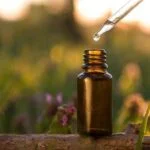Lavender essential oil is known for its calming and soothing properties, making it a popular choice for aromatherapy. In this article, we will explore how to use lavender essential oil for aromatherapy, discussing its benefits and different methods of application.
Aromatherapy is a holistic healing treatment that uses natural plant extracts to promote health and well-being. By understanding the benefits of aromatherapy and selecting the right lavender essential oil, you can create custom blends to address specific needs, from relaxation to stress relief and more.
Lavender essential oil has long been prized for its therapeutic effects on both the body and mind. It is known for its ability to reduce anxiety, improve sleep quality, alleviate headaches, and even promote skin health. Understanding the numerous benefits of aromatherapy can help you harness the power of lavender essential oil for your overall well-being.
When embarking on your aromatherapy journey with lavender essential oil, it’s crucial to choose a high-quality product. We will provide tips on how to select the best lavender essential oil for aromatherapy purposes.
Whether you prefer diffusing the oil in your home, inhaling it directly, or applying it topically, we will explore the various methods of using lavender essential oil for maximum effectiveness. And if you’re feeling creative, we’ll also offer recipes and instructions for crafting your own custom blends tailored to your unique needs and preferences.
Understanding the Benefits of Aromatherapy
Aromatherapy is a holistic healing treatment that uses natural plant extracts to promote health and well-being. One of the most popular essential oils used in aromatherapy is lavender essential oil. Lavender has been widely recognized for its calming and soothing properties, making it an ideal choice for promoting relaxation and reducing stress through aromatherapy.
Using lavender essential oil for aromatherapy can have a variety of benefits for both mental and physical health. It is known to help reduce anxiety, improve sleep quality, alleviate headaches, and even aid in managing mild pain. In addition to its emotional and mental health benefits, lavender essential oil also has antibacterial and anti-inflammatory properties that make it a great addition to any aromatherapy routine.
When using lavender essential oil for aromatherapy, it’s important to ensure that you are selecting a high-quality product. Look for 100% pure lavender essential oil with no added synthetic ingredients or fillers. You can also opt for organic options to ensure the highest quality and purity of the oil. Here are some tips on choosing the right lavender essential oil:
- Look for oils that are labeled as “pure” or “100% essential oil”
- Check for organic certifications
- Research reputable brands known for their high-quality essential oils
- Consider opting for locally-sourced or ethically-produced oils
Ultimately, incorporating lavender essential oil into your aromatherapy routine can provide a gentle yet powerful means of supporting overall well-being.
In summary, understanding the benefits of using lavender essential oil for aromatherapy provides insight into how this natural remedy can positively impact one’s mental and physical health. By choosing high-quality products and learning about different methods of use, individuals can effectively harness the therapeutic properties of lavender essential oil to improve their overall well-being, naturally.
Choosing the Right Lavender Essential Oil
When it comes to using lavender essential oil for aromatherapy, selecting the right product is essential for achieving the desired therapeutic effects. With numerous options available on the market, it can be challenging to differentiate between high-quality lavender essential oils and those of lesser quality. Here are some tips for choosing the right lavender essential oil for aromatherapy purposes:
- Look for organic or wildcrafted lavender essential oil: Organic and wildcrafted lavender essential oils are derived from plants that have been grown without synthetic pesticides or chemicals. This ensures a purer and more natural product, which is ideal for aromatherapy.
- Check the label for purity: High-quality lavender essential oil should specify that it is 100% pure and free from additives, fillers, or synthetic fragrances. Avoid products that contain diluents or artificial ingredients.
- Consider the production method: The best quality lavender essential oils are typically extracted through steam distillation or cold pressing methods. These processes preserve the integrity of the oil and retain its therapeutic properties.
When purchasing lavender essential oil for aromatherapy, it’s important to prioritize quality over price. Investing in a premium product will ensure a more effective and enjoyable aromatherapy experience.
Once you have chosen the right lavender essential oil, you can proceed to explore the various methods of using it for aromatherapy purposes, such as diffusing, inhaling, or topical application. By incorporating this versatile oil into your daily routine, you can experience its numerous benefits for both your physical and mental well-being.
Different Methods of Using Lavender Essential Oil for Aromatherapy
When it comes to using lavender essential oil for aromatherapy, there are several different methods that can be utilized to experience its many benefits. From diffusing the oil to inhaling it directly or applying it topically, each method offers a unique way to enjoy the soothing properties of lavender essential oil. Here, we’ll explore the different techniques for using lavender essential oil in aromatherapy and how each method can contribute to overall well-being.
Diffusing Lavender Essential Oil
One of the most popular and effective ways to use lavender essential oil for aromatherapy is by diffusing it into the air. This method involves adding a few drops of the oil to a diffuser filled with water, which then disperses the aromatic mist throughout a room. Diffusing lavender essential oil not only creates a calming and relaxing atmosphere but also helps purify the air and promote better respiratory function.
Inhaling Lavender Essential Oil
Inhaling lavender essential oil directly from the bottle or by using a personal inhaler is another common method for experiencing its therapeutic effects. Direct inhalation allows for quick absorption of the oil’s aroma, which can have immediate calming and stress-relieving benefits. Inhaling lavender essential oil can also help alleviate symptoms of anxiety and promote better sleep.
Topical Application of Lavender Essential Oil
Applying lavender essential oil topically is another effective way to benefit from its aromatherapeutic properties. By diluting the oil with a carrier oil such as coconut or jojoba oil, it can be safely applied to the skin for massage or targeted relief of muscle tension, headaches, or minor skin irritations. When used in this manner, lavender essential oil can provide both physical and emotional support while nourishing the skin.
By understanding these different methods of using lavender essential oil for aromatherapy, individuals can choose the approach that best suits their preferences and needs while reaping the many benefits that this versatile essential oil has to offer.
Crafting Your Own Lavender Essential Oil Blends
Lavender essential oil is a versatile and popular choice for aromatherapy due to its soothing and calming properties. Crafting your own lavender essential oil blends allows you to customize the scent and therapeutic benefits to meet your specific needs. Whether you want to promote relaxation, improve sleep, or alleviate headaches, creating personalized blends can enhance the overall aromatherapy experience.
One popular method for creating lavender essential oil blends is through the use of carrier oils. Carrier oils like jojoba, sweet almond, or coconut oil can be used to dilute lavender essential oil for topical application. For relaxation, combine a few drops of lavender essential oil with a carrier oil and apply it to pulse points such as the wrists and temples.
Another way to craft your own lavender essential oil blends is by using diffusers. Diffusers disperse the aroma of the essential oils into the air, providing a gentle and continuous fragrance. For a peaceful night’s sleep, blend lavender essential oil with other calming oils such as chamomile or bergamot in a diffuser before bedtime.
Additionally, you can create custom blends by combining different essential oils with complementary therapeutic properties. For example, blending lavender with eucalyptus and peppermint can create a refreshing and invigorating aroma that helps clear congestion and ease breathing.
By crafting your own lavender essential oil blends, you have the freedom to experiment with different scents and combinations to find what works best for you. The versatility of lavender essential oil makes it an excellent choice for creating personalized aromatherapy experiences tailored to your individual needs.
| Lavender Essential Oil Blends | Methods |
|---|---|
| Carrier Oils | Combine with carrier oils like jojoba or coconut oil for topical use |
| Diffusers | Blend with other essential oils in diffusers for continuous fragrance |
| Custom Blends | Mix with complementary oils for specific aromatherapy needs |
Best Practices for Using Lavender Essential Oil in Aromatherapy
Understanding Proper Dilution
When using lavender essential oil for aromatherapy, it is important to understand the proper dilution ratios. Essential oils are highly concentrated and can cause skin irritation if used undiluted. A general guideline for using lavender essential oil in aromatherapy is to dilute it in a carrier oil such as coconut oil, almond oil, or jojoba oil. The typical dilution ratio is 2-3 drops of lavender essential oil per teaspoon of carrier oil for topical application.
Safe Inhalation Practices
Inhalation is one of the most common methods of using lavender essential oil for aromatherapy. To inhale the aroma of lavender essential oil, you can add a few drops to a bowl of steaming hot water and breathe in the steam, or use a diffuser to disperse the scent throughout a room.
It’s important to avoid inhaling directly from the bottle, as this can be overwhelming and may cause irritation. Start with a small amount and adjust based on your comfort level.
Avoiding Overuse
While lavender essential oil has numerous benefits for aromatherapy, it is important to avoid overusing it. Using too much essential oil or using it too frequently can lead to sensitization, where the body becomes reactive to the substance over time.
It’s best to use lavender essential oil in moderation, allowing for breaks in between uses. By following these best practices, individuals can enjoy the relaxing and therapeutic benefits of lavender essential oil in their aromatherapy practice without any adverse effects.
The Science Behind Lavender Essential Oil and Aromatherapy
Lavender essential oil has long been used in aromatherapy for its calming and soothing properties. When inhaled, the scent of lavender can help reduce stress, anxiety, and promote relaxation. But how exactly does lavender essential oil work in aromatherapy?
Studies have shown that the inhalation of lavender essential oil can have a direct impact on the brain, specifically on the limbic system, which plays a role in emotions, behaviors, and sense of smell. The aroma of lavender has been found to have sedative effects, helping to calm the mind and body. This is why it is commonly used to promote better sleep and alleviate symptoms of anxiety.
Furthermore, lavender essential oil contains compounds such as linalool and linalyl acetate, which contribute to its therapeutic benefits. These compounds have been found to possess anti-inflammatory and analgesic properties. When used in aromatherapy, these components can help relieve headaches and migraines when inhaled or applied topically.
The use of lavender essential oil for aromatherapy is supported by both traditional knowledge and scientific research. Its calming effects on the mind and body make it a popular choice for those looking to experience relaxation and emotional balance through natural means.
| Benefits of Lavender Essential Oil | Scientific Evidence |
|---|---|
| Calming and relaxing properties | Studies show that inhalation of lavender essential oil can reduce anxiety levels |
| Pain relief | Compounds in lavender essential oil have been found to possess analgesic properties |
Conclusion
In conclusion, the versatility and effectiveness of lavender essential oil for aromatherapy make it a valuable addition to anyone’s daily self-care routine. From its calming effects on the mind to its potential in alleviating physical discomfort, lavender essential oil offers a holistic approach to well-being. Whether used through inhalation, diffusion, or applied topically, the benefits of lavender essential oil are backed by both anecdotal evidence and scientific research.
By choosing high-quality lavender essential oil and exploring different methods of use, individuals can tailor their aromatherapy experience to meet their specific needs. Crafting custom blends allows for personalized solutions, whether it be for relaxation, improved sleep quality, or enhanced focus and concentration. Moreover, incorporating best practices ensures that users can enjoy the therapeutic benefits of lavender essential oil safely and effectively.
With its wide-ranging benefits and numerous applications, incorporating aromatherapy into one’s daily routine can lead to a more balanced and uplifted state of being. As we continue to understand the science behind lavender essential oil and aromatherapy, it is clear that these natural remedies have the potential to positively impact our overall well-being.
Therefore, taking steps to integrate aromatherapy into daily life presents an opportunity for individuals to nurture themselves both physically and mentally through the use of this versatile essential oil.
Frequently Asked Questions
How Do You Use Lavender for Aromatherapy?
Lavender can be used for aromatherapy by adding a few drops of lavender essential oil to a diffuser and allowing the calming scent to fill the room. It can also be diluted and applied to the skin for a soothing massage.
How Do You Use Essential Oils as Aromatherapy?
Essential oils can be used for aromatherapy in a variety of ways, such as diffusing them in a room using a diffuser, adding them to bath water, or applying them topically when diluted with a carrier oil. The scents can help promote relaxation and ease stress.
Where Do You Put Lavender Oil for Calming?
To use lavender oil for calming, it can be placed on pulse points such as the wrists, neck, or temples for easy inhalation throughout the day. It can also be added to a warm bath or applied to the bottom of the feet before bedtime for relaxation.

Are you looking for a natural way to improve your health and wellbeing?
If so, aromatherapy may be the answer for you.





